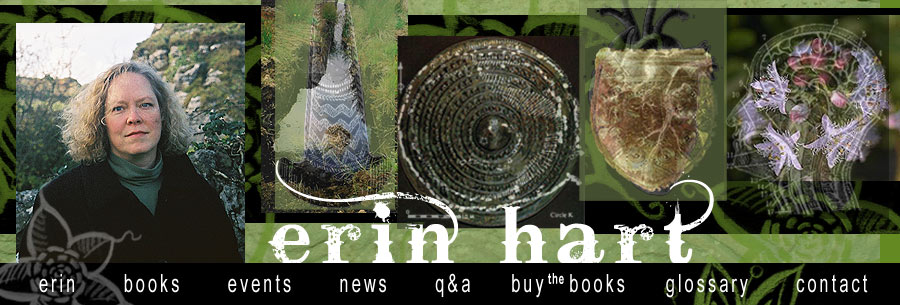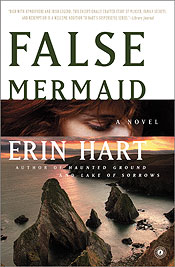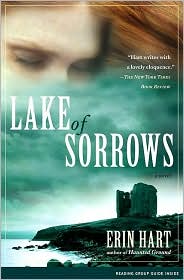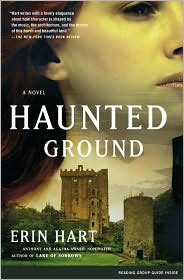
A half day's drive through Connemara started with a trip to the coral beach outside Carraroe, Co. Galway, where we hunted for shells and studied tidal pools. It's a magical place, one I always imagine as a spot where a selkie might come ashore.
Found a perfect, intact scallop shell that opened just like a mermaid's compact. The beach itself is not sand, but bits of coral that feel and sound like crushed bone beneath your feet. A great spot for beachcombing and just communing with nature. You can hear the sound of the water at this beach in a short video I shot in April 2011. I think everyone loved this place.
We made our way to Roundstone (a bad English translation; the place is actually 'Cloch na Rón,' or 'Seal Rock' in Irish). There we visited Malachy Kearns, Ireland's preeminent maker of bodhráns, the traditional Irish goatskin drums. We had a bite to eat and visited with Malachy and his wife Gifty, and then had a look around at the workshop, where goatskins were being dried and stretched before being nailed to round wooden frames.
On the way back into Galway, we stopped off at the grounds of the Ballinahinch Castle Hotel, to walk the labyrinth made out of stones from the sea. It's a peaceful, meditative exercise, walking the concentric circles of the labyrinth until you reach the center. The site is open to the public, just part of the parklands around the hotel. Fly fishing seems to be the real ticket there. A lovely spot.
 After our day trip, we had a little time off, so we walked around Store Street in Galway City, looking at all the marvelous medieval buildings. After perusing some great shops and pubs, and we ended up having dinner at the King's Head, built in 1612, and so called because the place was supposed to have been granted in payment to the Galway man who beheaded Charles I of England in 1649. Mussels, fish and chips, Irish coffee, beer, and a bit of bloody history. What more could a body want?
After our day trip, we had a little time off, so we walked around Store Street in Galway City, looking at all the marvelous medieval buildings. After perusing some great shops and pubs, and we ended up having dinner at the King's Head, built in 1612, and so called because the place was supposed to have been granted in payment to the Galway man who beheaded Charles I of England in 1649. Mussels, fish and chips, Irish coffee, beer, and a bit of bloody history. What more could a body want?We had a little time to visit the statue of Oscar Wilde in the city centre, and poke our noses into a few pubs just as the music was starting. Galway is a great town for traditional music, but the sessions usually don't begin until 9:30 or 10 pm.



























